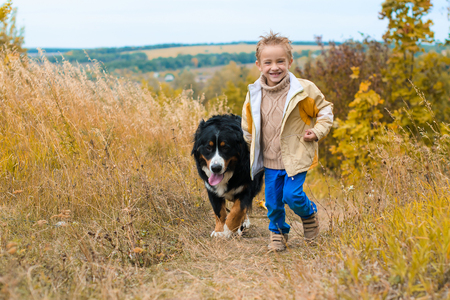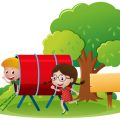Understanding the British Countryside
Before teaching children about outdoor safety, it’s important to first introduce them to the unique character of the British countryside. The UK is home to a diverse range of landscapes, from rolling hills and patchwork fields to dense woodlands, heathlands, and rugged coastlines. Helping children recognise these differences not only sparks their curiosity but also fosters respect for the natural world around them. Encourage youngsters to notice the changing seasons, spot wildflowers like bluebells and foxgloves, and listen for birds such as robins or skylarks. Alongside friendly farm animals and woodland creatures like hedgehogs and badgers, they’ll also learn about less obvious residents – from adders basking on sunny paths to tiny insects hiding beneath leaves. Pointing out how the countryside is shaped by both nature and centuries of human history will deepen their appreciation for why it’s so important to tread carefully and protect these spaces. By building this foundation, children will be better prepared to understand why outdoor safety matters in the varied and sometimes unpredictable British outdoors.
2. Recognising Common Hazards
When teaching children about outdoor safety in the British countryside, its essential to help them recognise and understand typical hazards they might encounter. Rural Britain offers stunning landscapes, but it also comes with its own set of risks that can catch even seasoned walkers off guard. Below is a handy table outlining some of the most common hazards and tips for staying safe:
| Hazard | Description | Safety Tip |
|---|---|---|
| Stinging Nettles | Plants with tiny hairs that can cause itching and a rash if touched. | Show children how to spot nettles and encourage them to wear long sleeves and trousers when exploring overgrown areas. |
| Adders | Britains only native venomous snake, often found sunbathing on paths or heathland. | Teach children to stick to marked paths and never poke around in undergrowth or disturb basking snakes. |
| Uneven Terrain | Fields, hills, and woodland can be bumpy and slippery, especially after rain. | Encourage proper footwear like sturdy boots and always watch your step, especially when running or playing. |
| Livestock | Cows, sheep, and horses may be curious or protective of their young. | Keep a respectful distance from animals, move calmly through fields, and always close gates behind you. |
| Electric Fences | Used on farms to contain animals; these fences can give a mild shock. | Point out warning signs and teach children never to touch wires or posts with coloured insulators. |
| Changeable Weather | The British weather can shift quickly from sunshine to rain or fog. | Packing waterproofs and extra layers is a must; check the forecast before heading out and explain the importance of being prepared. |
By familiarising children with these typical countryside dangers, you empower them to explore safely while building confidence. Take opportunities during walks to point out real-life examples, reinforcing awareness without causing alarm. This practical knowledge not only helps avoid accidents but also encourages respect for nature’s unpredictable side.

3. Navigating Footpaths and Rights of Way
Teaching children about navigating the British countryside safely means helping them understand the value of public footpaths and rights of way. The UK is known for its extensive network of walking routes that cross farmland, woodlands, and moorland. These paths are not only a treasured part of local culture but are also legally protected for public use. Make sure your children know the importance of sticking to designated footpaths, as wandering off can lead to trespassing on private property or disturbing wildlife habitats. Take time to explain common signs they might encounter—like yellow arrows for footpaths, blue for bridleways, and red for byways—and why it’s vital to respect these markers. Familiarise them with key countryside access rules such as closing gates behind you, not picking wildflowers, and keeping dogs under control. By instilling these habits early on, children learn to enjoy the outdoors while also respecting landowners’ rights and preserving the natural beauty of the British countryside for everyone.
4. Farm and Animal Safety
When exploring the British countryside, it’s essential to teach children how to behave safely around farm animals, gates, and equipment. Farms are working environments, and a lack of awareness can lead to accidents. The Countryside Code provides valuable guidance for families enjoying rural walks or visits to farms.
Understanding Animal Behaviour
Children should know that even calm-looking livestock like cows, sheep, or horses can be unpredictable—especially if they feel threatened or are with their young. Always supervise children closely and remind them not to approach or feed animals without the farmer’s permission. A sudden movement or loud noise can startle animals, so walking quietly and calmly is vital.
Key Points for Safe Behaviour Around Animals
| Do | Dont |
|---|---|
| Walk calmly and quietly past animals | Run, shout, or make sudden movements near livestock |
| Keep dogs on a short lead (but let go if chased) | Try to touch or feed animals without permission |
| Stick to paths and follow signs | Enter fields with animals unless necessary |
The Right Way to Use Gates and Stiles
Teach children that gates and stiles aren’t just for people—they help manage animals too. Always leave gates as you find them: if a gate is open when you arrive, leave it open; if it’s closed, close it behind you. Don’t let children swing on gates, as this can damage them and cause problems for farmers.
Farm Equipment Awareness
Working farms often have tractors, machinery, and other equipment in use—even on public rights of way. Make sure children understand that farm vehicles might appear suddenly and cannot stop quickly. Never play near parked machinery or farm buildings, and always keep to marked footpaths.
Countryside Code Reminders for Families
- Respect livestock: Give animals plenty of space.
- Avoid disturbing work: Stay clear of tractors and workers.
- Be responsible: Supervise children at all times on farmland.
- Follow signage: Heed all warning notices posted by farmers.
This practical knowledge ensures everyone enjoys the countryside safely while respecting those who live and work there.
5. Preparing for Country Walks
One of the most important steps in teaching children about outdoor safety in the British countryside is preparing properly before heading out. The unpredictable British weather means dressing appropriately is a must. Equip your children with waterproof jackets, wellies or sturdy walking boots, and layers that can be added or removed as conditions change. A warm hat and gloves are sensible even in spring and autumn.
When packing for a country walk, include plenty of water, snacks such as oat bars or fruit, and a small rucksack for each child if they’re old enough. Don’t forget sunscreen—even on cloudy days—and insect repellent during warmer months. It’s wise to carry a basic first aid kit containing plasters, antiseptic wipes, and any personal medication your family might need.
Before you leave, always let someone know where you’re going and roughly when you expect to return. This simple step is vital in case you run into difficulties or take a wrong turn on unfamiliar footpaths or bridleways. Many local communities also recommend carrying an OS map or downloading a reliable mapping app on your phone, just in case you lose signal or get lost.
Finally, encourage children to be mindful of their own comfort and safety throughout the walk—remind them to tell an adult if they feel unwell, spot hazards, or notice any changes in the weather. Preparation not only keeps everyone safe but also helps make your countryside adventure enjoyable and stress-free.
6. Emergency Situations and Seeking Help
One of the most important aspects of outdoor safety is ensuring children know exactly what to do if something goes wrong in the British countryside. From getting lost to dealing with sudden changes in weather or minor injuries, preparation is key. Here’s how you can equip your children with the right knowledge and confidence to handle emergency situations while exploring rural Britain.
Teaching Children How to React
Begin by explaining that getting lost can happen to anyone, even experienced walkers. Teach your children to stop where they are, stay calm, and avoid wandering further. Encourage them to use a whistle (three short blasts is the recognised distress signal) or call out for help if there are people nearby. For older children, show them how to use mobile phones to share their location if signal allows.
Coping With Sudden Weather Changes
The British countryside is known for unpredictable weather. Instil in your children the habit of checking the forecast before setting out and recognising when conditions are changing—such as darkening skies or dropping temperatures. If caught out, advise them to seek shelter, put on extra layers from their backpack, and stay put until help arrives or it’s safe to move on.
Dealing With Minor Injuries
Packed with brambles and uneven paths, minor scrapes and cuts are part of country adventures. Teach children basic first aid: clean a wound with water from their bottle, apply a plaster from their kit, and tell an adult straight away. Remind them not to touch unknown plants or attempt to treat serious injuries themselves.
Seeking Help Using UK Emergency Services
Make sure your child knows how to dial 999 or 112 in an emergency. Explain what information they need to give: location (using landmarks or apps like What3Words), nature of the emergency, and any injuries. Practise this conversation at home so they feel confident if ever needed. Let them know that calling for help is always okay if they feel unsafe or lost—emergency services are there for everyone, including children exploring the great outdoors.


